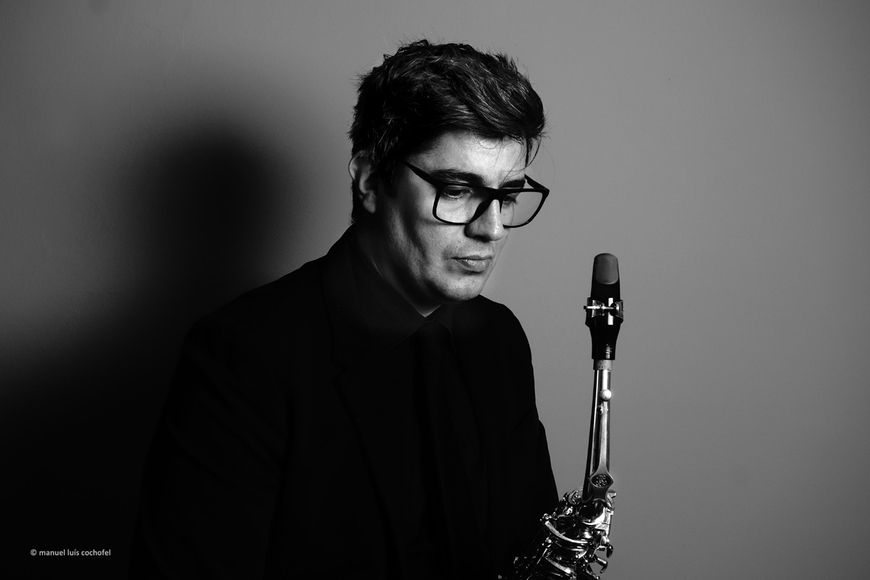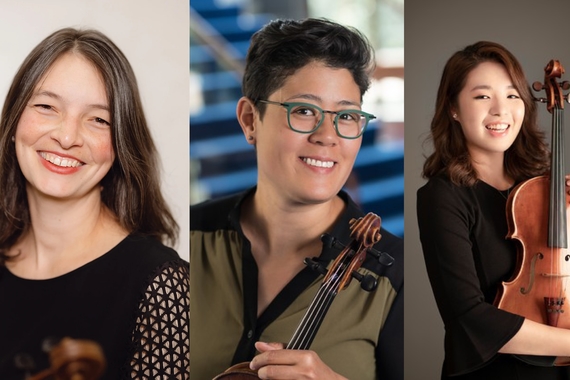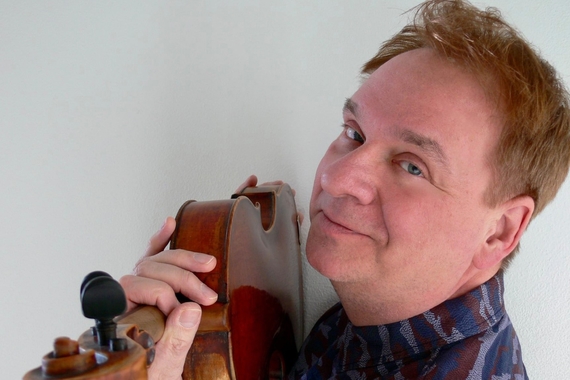Pioneering Assistive Technology for Blind Musicians
Rodrigo Pires de Lima (DMA, saxophone, student of Preston Duncan) received international press coverage in PortugaliNews for his research that allows blind musicians to play live music without the use of Braille. This research integrates existing technology with echolocation. Pires de Lima discusses his research and implications for the future.
What inspired you to pursue this project and research?
In 2013, I was completing a specialization in 21st-century music for saxophone at the conservatory of Strasbourg where I met the French pianist Caroline Sablayrolles. She is visually impaired and uses multiple devices (amplifiers, Braille scores, etc.) and various techniques to decipher a score and to prepare her concerts. After observing her prepare for concerts, I wondered if it would be possible to reduce the number of reading instruments to enable a person with this kind of condition to decode a score more efficiently.
Can you describe your project?
This project consists of the creation of the first musical piece for people with visual impairment without the use of Braille. Using human echolocation, I wrote a code of “click sounds” to create a more efficient process for a musician with visual impairment to decode a score without the use of their hands, thereby allowing them to read the score and perform a musical instrument simultaneously. This project is the first to employ echolocation as a musical reading tool.
How does the technology work?
In 2017 I wrote a piece “Daniela 3.0” specifically for this project and aligned it with an electronic interface patch using a headset with a microphone to provide a “silent” score. The musician then decodes the score using the echolocation principles some animals (e.g., bats) employ to hunt and to distinguish different targets. In order for a human to receive this feedback from the headphone set, they produce “click” sounds with their mouth that are picked up by the microphone connected to the program in closed circuit. I worked with José Grossinho, a musician and sound engineer, to create this interface patch in Max MSP. This project is a Beta version, but I have ideas for improvement including a more complex interface and assembling a mixed orchestra of musicians with different sight capacities.
Have you received feedback from musicians who would like to use this technology in the future?
This project was presented in concert with my group Electroville Jukebox and Dr. Rui Batista, a blind person with a strong passion for electric guitars and harmonics. He is also one of the directors of the Associação dos Cegos e Amblíopes de Portugal (ACAPO) whose mission is to protect the rights of people with visual impairment. Dr. Rui Batista’s involvement in the project provided me with constructive feedback, validity, and national media exposure. He wrote, “The system Rodrigo developed allowed me
to experience my live performance in a completely different way...This project is not the solution to a problem, but rather an alternative where the main objective is to improve the quality of life of people with visual impairment.”

Tutti. (Italian) all. every musician to take part.
Tutti is the annual magazine of the University of Minnesota School of Music.



